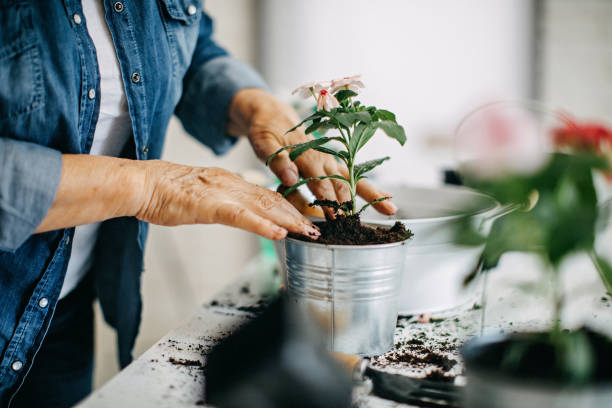In recent years, indoor gardening has experienced a remarkable surge in popularity. People from all walks of life are embracing the idea of bringing nature inside their homes, and for good reason. Indoor gardening not only enhances the aesthetics of your living space but also offers numerous health benefits. In this article, we will delve into the world of indoor gardening, exploring its benefits, popular plant choices, and essential tips to create a thriving indoor garden.
Benefits of Indoor Gardening
- Improved Air Quality: Plants act as natural air purifiers, filtering harmful toxins and releasing fresh oxygen. By introducing houseplants into your indoor space, you can enjoy cleaner and healthier air.
- Reduced Stress and Improved Well-being: Studies have shown that spending time surrounded by greenery can reduce stress levels and improve overall well-being. Indoor gardening provides an opportunity to connect with nature and create a peaceful oasis within your home.
- Enhanced Aesthetics: Indoor plants add a touch of natural beauty to any room. With a wide variety of plant species available, you can choose plants that complement your interior decor and create a visually appealing environment.
Popular Indoor Plants
- Spider Plant (Chlorophytum comosum): Known for its resilience and air-purifying qualities, the spider plant is an excellent choice for beginners. Its long, arching leaves with white stripes add a touch of elegance to any room.
- Snake Plant (Sansevieria trifasciata): This hardy plant is renowned for its ability to tolerate low light conditions and requires minimal maintenance. With its striking upright leaves, the snake plant adds a contemporary flair to your indoor space.
- Pothos (Epipremnum aureum): The pothos is a versatile trailing plant that thrives in various lighting conditions. Its heart-shaped leaves, ranging from green to variegated patterns, make it a popular choice for hanging baskets and shelves.
Tips for a Thriving Indoor Garden
- Consider Light Requirements: Different plants have varying light requirements. Before selecting plants, assess the natural light availability in your home. Choose low-light plants for rooms with limited sunlight, and opt for bright, indirect light for plants that thrive in such conditions.
- Proper Watering: Overwatering or underwatering can be detrimental to indoor plants. Research the watering needs of each plant species and establish a watering routine accordingly. Use well-draining soil and ensure that water doesn’t accumulate at the bottom of pots.
- Adequate Ventilation: Indoor plants benefit from proper airflow to prevent fungal growth and promote healthy growth. Open windows regularly, use fans, or invest in air purifiers to maintain optimal air circulation.
- Fertilize Regularly: Indoor plants rely on regular fertilization to thrive. Choose a suitable organic fertilizer and follow the recommended application instructions to provide essential nutrients to your plants.
Indoor gardening offers a wonderful opportunity to bring nature’s beauty and vitality into our homes. From improving air quality and reducing stress to enhancing aesthetics, the benefits of indoor gardening are vast. By selecting the right plants, considering light requirements, and providing proper care, you can create a lush and vibrant indoor garden that transforms your living space into a tranquil haven. So, why not embark on this green journey and embrace the art of indoor gardening today?


